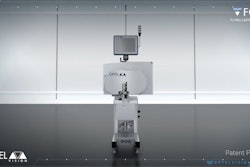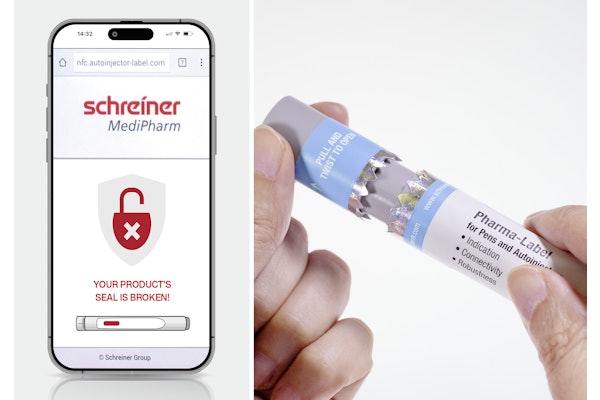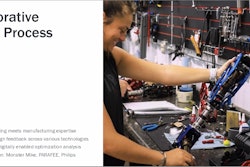Nutec worked with a Summit IT consultant that created the data repository that resides at Summit's New Jersey headquarters. Nutec also brought the system integration capabilities that permit data to flow from all points in the supply chain to the data repository.
By February 4, the Bloodhound technology had clearly identified two instances where Summit's Vectra 3D product had been found on the Web sites of Internet pharmacies. "I am very disappointed that individuals have willfully violated our anti-diversion contract and placed our product outside the veterinary channel for sale," says Julia Stephanus, president and CEO of Summit VetPharm. "Vectra 3D and all Summit VetPharm products are exclusively dispensed by licensed veterinarians. We will not tolerate product diversion because it undermines the relationship between veterinarians and pet owners and raises questions about product integrity."
"Vets are highly concerned by product diversion of flea and tick as well as other animal health products," says Albert Ahn, senior director of veterinary services at Summit. "We will fully enforce our anti-diversion policy. One of the core principles upon which our company was founded was the commitment to ensure that our products are developed and made available exclusively through licensed vets. By securing our supply chain, we are able to protect the veterinary professional, maintain authenticity of our products, and enhance the role of veterinarians in the lives of the animals they treat."
Stephanus makes it clear just how central a role is played by the Bloodhound track-and-trace technology: "Through our Bloodhound Technology and our legally binding anti-diversion agreement, which must be signed by the owner of the veterinarian practice prior to a purchase of Vectra 3D, we can keep companion animal health exactly where it belongs--in the hands of professionals. Veterinarian response to the Summit VetPharm anti-diversion policy and the proprietary Bloodhound technology has been overwhelmingly positive."
How Bloodhound works
Ahn was forthcoming about how Bloodhound Technology is implemented throughout the packaging and distribution chain, and in identifying the key technology and service providers in this implementation, except for identifying the firm that contract manufactures and packages Vectra 3D for Summit VetPharm. That firm, he notes, is in the U.S. and is a "reputable GMP manufacturer."
Primary containers are aluminum tubes holding anywhere from 0.8 to 8.0 mL of viscous liquid medication used on cats and dogs to rid them of ticks and fleas. These tubes are placed in polyvinyl chloride clamshells and the clamshells are placed in a paperboard sleeve.
Prior to the sequence described above, the paperboard sleeves, stacked as flat blanks, are fed from a magazine through a dual-head printer supplied by Nutec Systems and made by APS. The print heads are digital thermal ink-jet printers from HP. One head applies a unique covert code that can only be seen by a Summit agent using a covert-capable reading system. The other print head applies the same unique code, but it's done overtly in black ink against the white paperboard.
"Printing of large groups of sleeves can be done quickly and efficiently and then applied to clamshells when needed," says Nutec's Mike Shaw. "All that matters is that each sleeve has a unique ID."
Operators place 12 sleeved clamshells in a paperboard case. The case is then conveyed past a DataMan vision system from Cognex. It reads each of the 12 unique codes on the paperboard sleeves and sends those codes to a PC so that the Nutec system can generate a unique case code. The case is then conveyed to the case print and inspection station, where the unique case code is printed (again by an APS digital thermal ink-jet system) and verified by another Cognex vision system.
This Cognex system also sends the newly printed case code to the Nutec PC. There a child/parent relationship is created, because data in the unique case code represents all 12 codes on the paperboard sleeves. The parent/child file is written to the PC hard drive for later retrieval by the contract packager's site server. At Summit's headquarters in New Jersey, the data repository logs onto this server on a regularly scheduled basis.
Next in the supply chain sequence is shipment of cases to a distributor. It's the distributor that ships to veterinarian clinics, and shipments are always by the case so that the parent/child relationship remains intact. When the distributor gets an order from a veterinarian clinic, as the order gets processed and shipped, the distributor associates that clinic's purchase order with the unique code on the case and, by virtue of the parent/child relationship, with each sleeved clamshell.
"The whole idea is that Summit knows the unique numbers that are for each case and each unit in that case," says Shaw. "They also know which cases are going to which clinics. Summit then monitors the gray market, chiefly Internet sites, and if they see Vectra for sale they acquire it." All that's left is a scan of the code to see who the naughty vet is.
Ahn says RFID was explored as a track-and-trace possibility, but a solution based on 2D bar-code technology was viewed as more affordable and more easily implemented. "We continue to follow RFID with great interest," he adds. "In the meantime, we view our current implementation as cutting-edge technology and a development that is good for the entire animal health industry. We're thrilled to be in the vanguard. It's part of good product stewardship."
Ironically, what Summit VetPharm has implemented is a system that is California e-Pedigree ready--even though, as a maker of animal health products rather than drugs used by humans, Summit is under no obligation to do so. It's safe to bet that any number of drug manufacturers who are obligated to meet the California requirements would like to have the kind of track-and-trace capabilities that Summit VetPharm has.
Nutec's Shaw says he's seeing considerable interest in a solution like Summit's among drug manufacturers that aren't as large as and don't have the resources of a Pfizer or a Merck. "Those large drug manufacturers have their own unique ID-generating capabilities in-house," says Shaw. "They download unique codes straight to the printer on their packaging line. But smaller firms can't invest that kind of money in an in-house capability. They're looking for unique serialized codes from an outside source."
--By Pat Reynolds, Editor, Packaging World magazine
By February 4, the Bloodhound technology had clearly identified two instances where Summit's Vectra 3D product had been found on the Web sites of Internet pharmacies. "I am very disappointed that individuals have willfully violated our anti-diversion contract and placed our product outside the veterinary channel for sale," says Julia Stephanus, president and CEO of Summit VetPharm. "Vectra 3D and all Summit VetPharm products are exclusively dispensed by licensed veterinarians. We will not tolerate product diversion because it undermines the relationship between veterinarians and pet owners and raises questions about product integrity."
"Vets are highly concerned by product diversion of flea and tick as well as other animal health products," says Albert Ahn, senior director of veterinary services at Summit. "We will fully enforce our anti-diversion policy. One of the core principles upon which our company was founded was the commitment to ensure that our products are developed and made available exclusively through licensed vets. By securing our supply chain, we are able to protect the veterinary professional, maintain authenticity of our products, and enhance the role of veterinarians in the lives of the animals they treat."
Stephanus makes it clear just how central a role is played by the Bloodhound track-and-trace technology: "Through our Bloodhound Technology and our legally binding anti-diversion agreement, which must be signed by the owner of the veterinarian practice prior to a purchase of Vectra 3D, we can keep companion animal health exactly where it belongs--in the hands of professionals. Veterinarian response to the Summit VetPharm anti-diversion policy and the proprietary Bloodhound technology has been overwhelmingly positive."
How Bloodhound works
Ahn was forthcoming about how Bloodhound Technology is implemented throughout the packaging and distribution chain, and in identifying the key technology and service providers in this implementation, except for identifying the firm that contract manufactures and packages Vectra 3D for Summit VetPharm. That firm, he notes, is in the U.S. and is a "reputable GMP manufacturer."
Primary containers are aluminum tubes holding anywhere from 0.8 to 8.0 mL of viscous liquid medication used on cats and dogs to rid them of ticks and fleas. These tubes are placed in polyvinyl chloride clamshells and the clamshells are placed in a paperboard sleeve.
Prior to the sequence described above, the paperboard sleeves, stacked as flat blanks, are fed from a magazine through a dual-head printer supplied by Nutec Systems and made by APS. The print heads are digital thermal ink-jet printers from HP. One head applies a unique covert code that can only be seen by a Summit agent using a covert-capable reading system. The other print head applies the same unique code, but it's done overtly in black ink against the white paperboard.
"Printing of large groups of sleeves can be done quickly and efficiently and then applied to clamshells when needed," says Nutec's Mike Shaw. "All that matters is that each sleeve has a unique ID."
Operators place 12 sleeved clamshells in a paperboard case. The case is then conveyed past a DataMan vision system from Cognex. It reads each of the 12 unique codes on the paperboard sleeves and sends those codes to a PC so that the Nutec system can generate a unique case code. The case is then conveyed to the case print and inspection station, where the unique case code is printed (again by an APS digital thermal ink-jet system) and verified by another Cognex vision system.
This Cognex system also sends the newly printed case code to the Nutec PC. There a child/parent relationship is created, because data in the unique case code represents all 12 codes on the paperboard sleeves. The parent/child file is written to the PC hard drive for later retrieval by the contract packager's site server. At Summit's headquarters in New Jersey, the data repository logs onto this server on a regularly scheduled basis.
Next in the supply chain sequence is shipment of cases to a distributor. It's the distributor that ships to veterinarian clinics, and shipments are always by the case so that the parent/child relationship remains intact. When the distributor gets an order from a veterinarian clinic, as the order gets processed and shipped, the distributor associates that clinic's purchase order with the unique code on the case and, by virtue of the parent/child relationship, with each sleeved clamshell.
"The whole idea is that Summit knows the unique numbers that are for each case and each unit in that case," says Shaw. "They also know which cases are going to which clinics. Summit then monitors the gray market, chiefly Internet sites, and if they see Vectra for sale they acquire it." All that's left is a scan of the code to see who the naughty vet is.
Ahn says RFID was explored as a track-and-trace possibility, but a solution based on 2D bar-code technology was viewed as more affordable and more easily implemented. "We continue to follow RFID with great interest," he adds. "In the meantime, we view our current implementation as cutting-edge technology and a development that is good for the entire animal health industry. We're thrilled to be in the vanguard. It's part of good product stewardship."
Ironically, what Summit VetPharm has implemented is a system that is California e-Pedigree ready--even though, as a maker of animal health products rather than drugs used by humans, Summit is under no obligation to do so. It's safe to bet that any number of drug manufacturers who are obligated to meet the California requirements would like to have the kind of track-and-trace capabilities that Summit VetPharm has.
Nutec's Shaw says he's seeing considerable interest in a solution like Summit's among drug manufacturers that aren't as large as and don't have the resources of a Pfizer or a Merck. "Those large drug manufacturers have their own unique ID-generating capabilities in-house," says Shaw. "They download unique codes straight to the printer on their packaging line. But smaller firms can't invest that kind of money in an in-house capability. They're looking for unique serialized codes from an outside source."
--By Pat Reynolds, Editor, Packaging World magazine



















